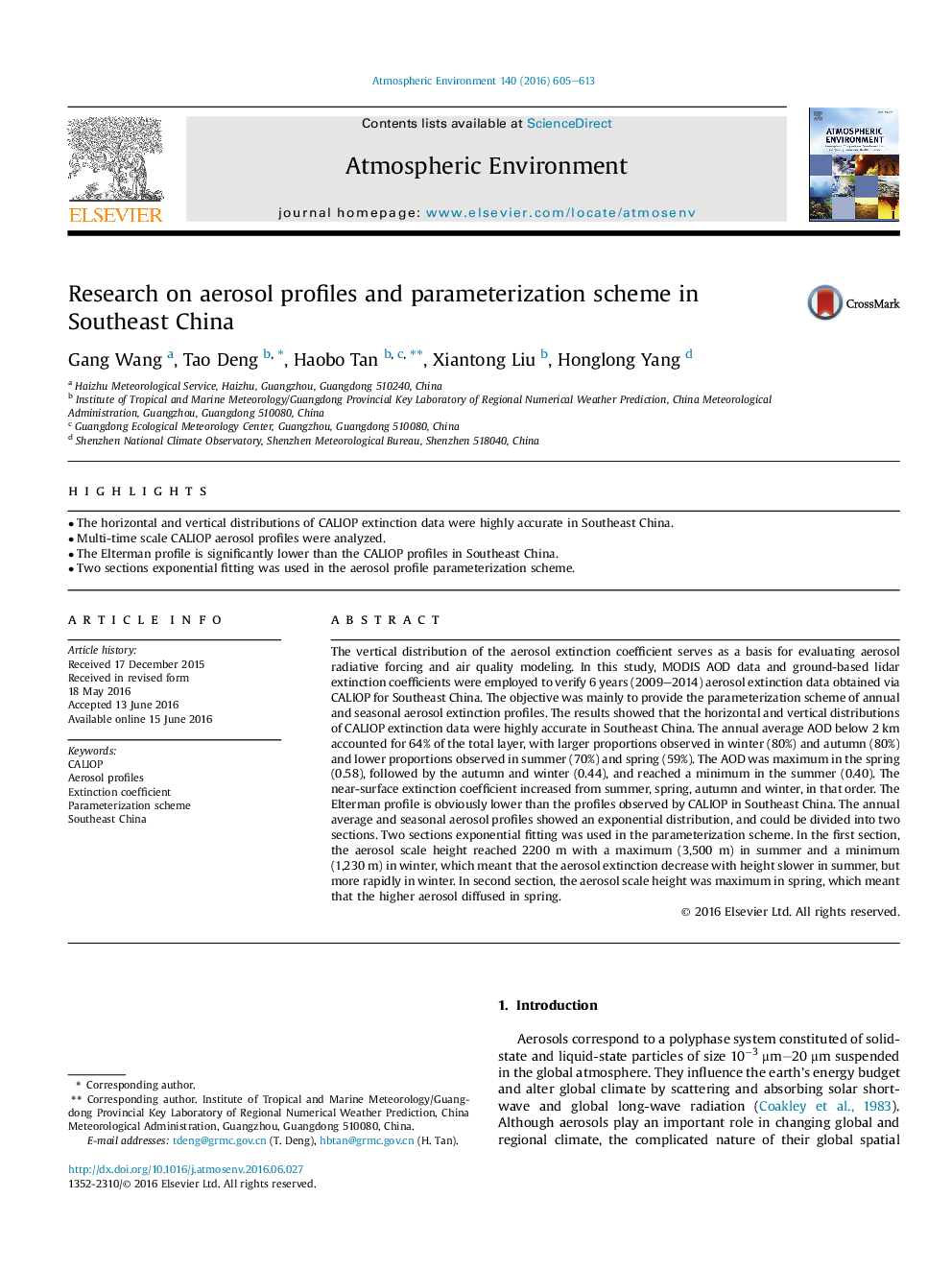| Article ID | Journal | Published Year | Pages | File Type |
|---|---|---|---|---|
| 6336268 | Atmospheric Environment | 2016 | 9 Pages |
Abstract
The vertical distribution of the aerosol extinction coefficient serves as a basis for evaluating aerosol radiative forcing and air quality modeling. In this study, MODIS AOD data and ground-based lidar extinction coefficients were employed to verify 6 years (2009-2014) aerosol extinction data obtained via CALIOP for Southeast China. The objective was mainly to provide the parameterization scheme of annual and seasonal aerosol extinction profiles. The results showed that the horizontal and vertical distributions of CALIOP extinction data were highly accurate in Southeast China. The annual average AOD below 2Â km accounted for 64% of the total layer, with larger proportions observed in winter (80%) and autumn (80%) and lower proportions observed in summer (70%) and spring (59%). The AOD was maximum in the spring (0.58), followed by the autumn and winter (0.44), and reached a minimum in the summer (0.40). The near-surface extinction coefficient increased from summer, spring, autumn and winter, in that order. The Elterman profile is obviously lower than the profiles observed by CALIOP in Southeast China. The annual average and seasonal aerosol profiles showed an exponential distribution, and could be divided into two sections. Two sections exponential fitting was used in the parameterization scheme. In the first section, the aerosol scale height reached 2200Â m with a maximum (3,500Â m) in summer and a minimum (1,230Â m) in winter, which meant that the aerosol extinction decrease with height slower in summer, but more rapidly in winter. In second section, the aerosol scale height was maximum in spring, which meant that the higher aerosol diffused in spring.
Related Topics
Physical Sciences and Engineering
Earth and Planetary Sciences
Atmospheric Science
Authors
Gang Wang, Tao Deng, Haobo Tan, Xiantong Liu, Honglong Yang,
